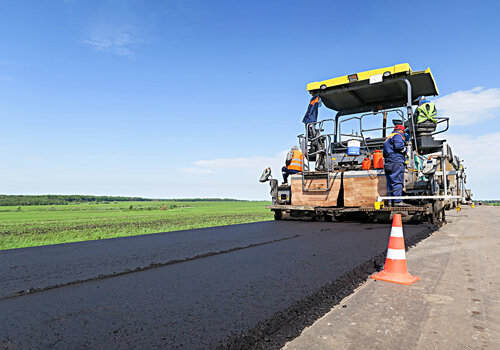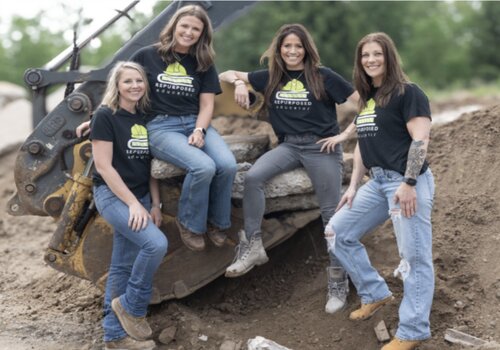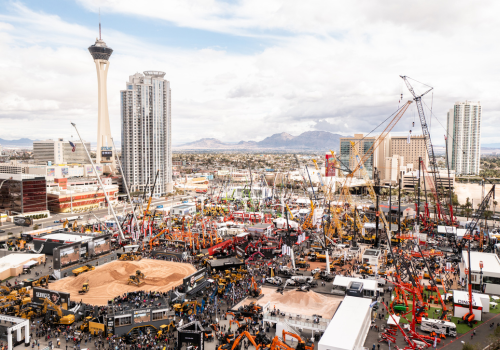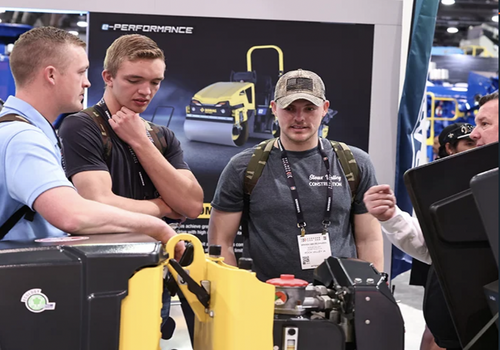If you’ve ever built a road in the middle of a bustling downtown, you know it’s nothing like working on a rural two-lane highway that stretches for miles through open farmland.
The materials might be similar—aggregate, binder, concrete—but the challenges, priorities and even the way you close a lane can be wildly different. Understanding these distinctions is the difference between delivering on time or getting bogged down in delays and safety issues.
THE BIG PICTURE: DIFFERENT CONTEXTS, DIFFERENT RISKS
Urban projects are defined by density: more cars, more people, more utilities and less space to work. Every decision has a ripple effect on traffic, businesses and residents.
Rural projects have more room but fewer redundancies. A single lane closure can cut off miles of roadway, and a detour can mean an extra 30 minutes for drivers. And while rural roads carry a minority of U.S. vehicle miles traveled, they account for a disproportionately high share of fatalities—1.5 times the urban fatality rate, according to the U.S. Department of Transportation.
DESIGN PRIORITIES: COMPLETE STREETS VS. LOW-VOLUME RESILIENCE
Urban: Many cities are moving toward “Complete Streets” design principles—balancing vehicle throughput with pedestrian, cyclist and transit needs. That often means narrower lanes, more crossings, and features like curb extensions or median refuges. These context-sensitive designs improve safety when done right.
Rural: Long stretches with low traffic volumes need designs that last with minimal maintenance. For some roads, that means gravel or surface treatments built to handle weather extremes, supported by solid drainage and shoulder work. Updated state design manuals—like South Dakota DOT’s 2024 criteria—specify how rural sections can differ in cross slope, shoulder width and surfacing.
UTILITIES AND RIGHT-OF-WAY: THE URBAN SQUEEZE
Urban road work often starts with a game of “find that utility” under streets layered with decades of water, gas, fiber and power lines. Relocating them is a top schedule risk, and every relocation requires coordination with multiple stakeholders.
Early utility coordination is critical to avoid major delays, especially in cities with lane-closure restrictions during rush hours. In some jurisdictions, contractors face night-only work windows to minimize disruption, which can increase labor costs and complicate scheduling – and put workers in dangerous conditions.
WORK-ZONE MANAGEMENT: DIFFERENT PLAYBOOKS
Urban: You’re working next to heavy peak traffic, impatient drivers, and frequent intersections. That’s why more cities are using Variable Speed Limits (VSL), automated speed enforcement and dynamic message signs to manage driver behavior around lane closures. Queue-warning systems are also gaining traction, especially on urban freeways where stop-and-go traffic can trigger secondary crashes.
Rural: With fewer lanes and high approach speeds, the stakes are different. A work zone on a rural two-lane road may need portable signals or pilot cars just to keep traffic moving. Lane-closure analysis guidelines—like those from Maryland SHA—help determine if a closure is even feasible without creating dangerous queues.
Both environments share a sobering reality: work-zone fatalities are rising, with 39,000 work zone injuries and 899 deaths in 2023. Keeping workers safe on our highways must be done at every jobsite, every day with proactive approaches.
CONTRACTOR TIPS
Urban Playbook
-
Stage around people, not just cars. Maintain safe pedestrian and transit access. It reduces complaints and meets ADA requirements.
-
Engineer closure hours. Use lane-closure policies and traffic modeling to choose off-peak full closures when they’ll actually speed up the job.
-
Deploy speed tech. Variable speed limits, automated enforcement and queue-warning systems can cut rear-end crashes in high-density corridors.
Rural Playbook:
-
Design for forgiveness. Widen shoulders, add rumble strips and maintain clear zones to reduce run-off-road crash severity.
-
Plan for long detours. Where alternate routes are scarce, portable traffic signals or phased construction may be safer than full closure.
-
Mind materials and drainage. Better drainage extends pavement life and reduces costly rework in remote locations.
THE BOTTOM LINE
Whether you’re threading a new bike lane through downtown or paving a farm-to-market road, context drives the plan.
Urban jobs demand precision staging, intense stakeholder coordination and designs that work for all modes. Rural jobs demand durability, safe high-speed operations and strategies for long detours and disaster resilience.
Get those right, and you’re not just building a road—you’re building a safer, smarter transportation network that fits the place it serves.
Make every high-traffic job a success. Use six proven tips to boost safety, streamline paving in busy areas, and choose equipment built for urban challenges. Keep your crew confident, productive and protected.
Photo credit: SHUTTERSTOCK/IKEBANA ART-STUDIO












